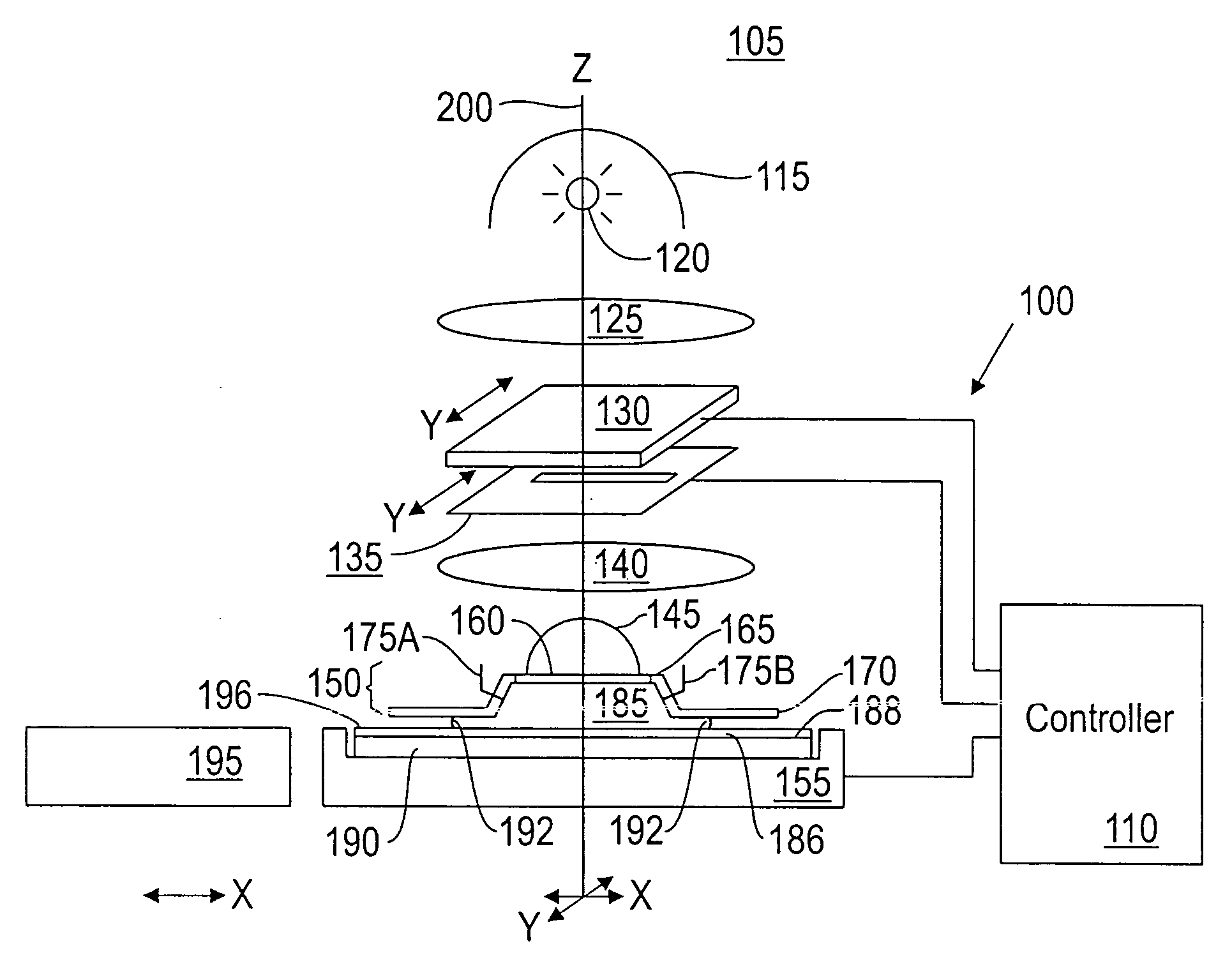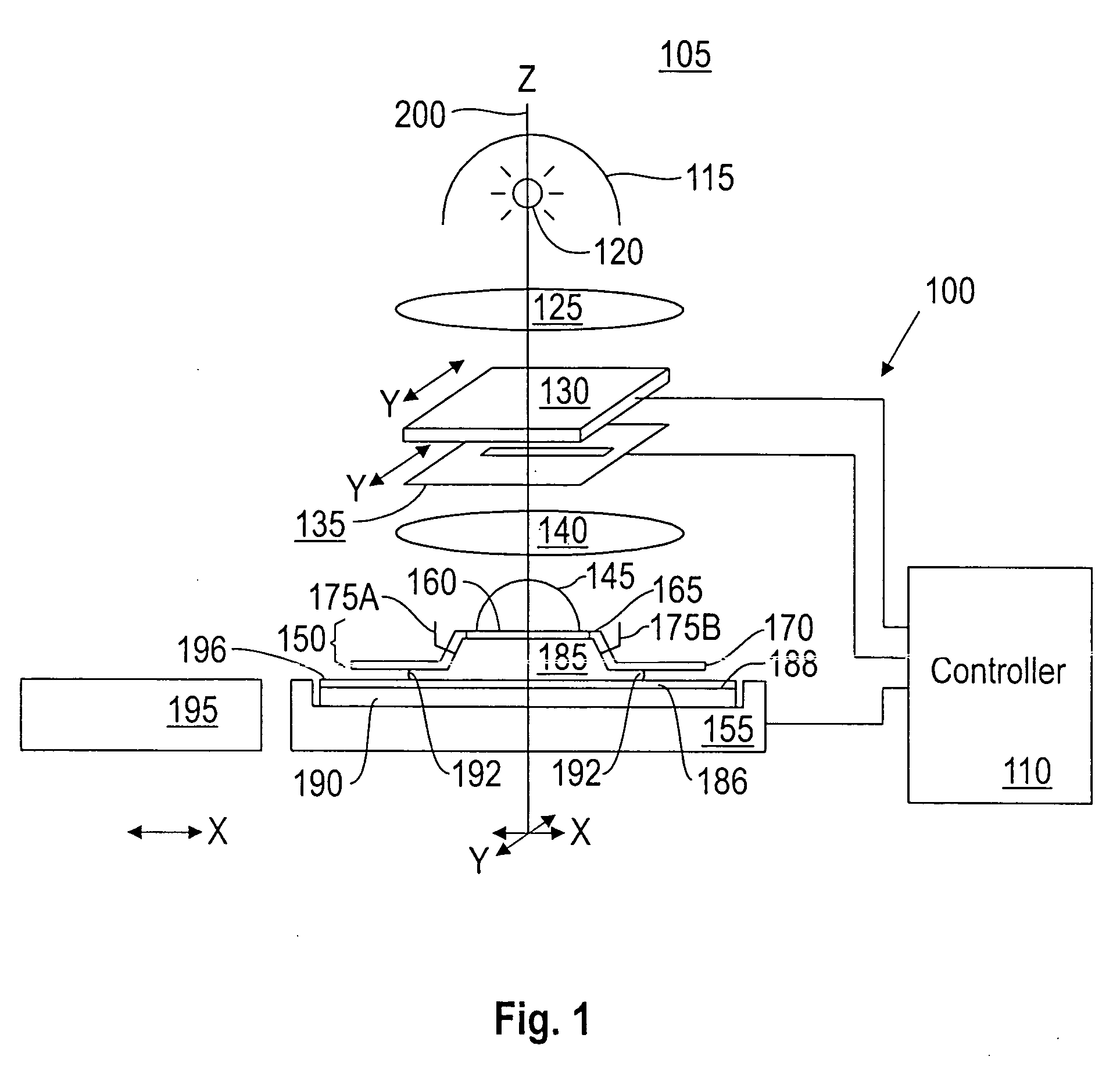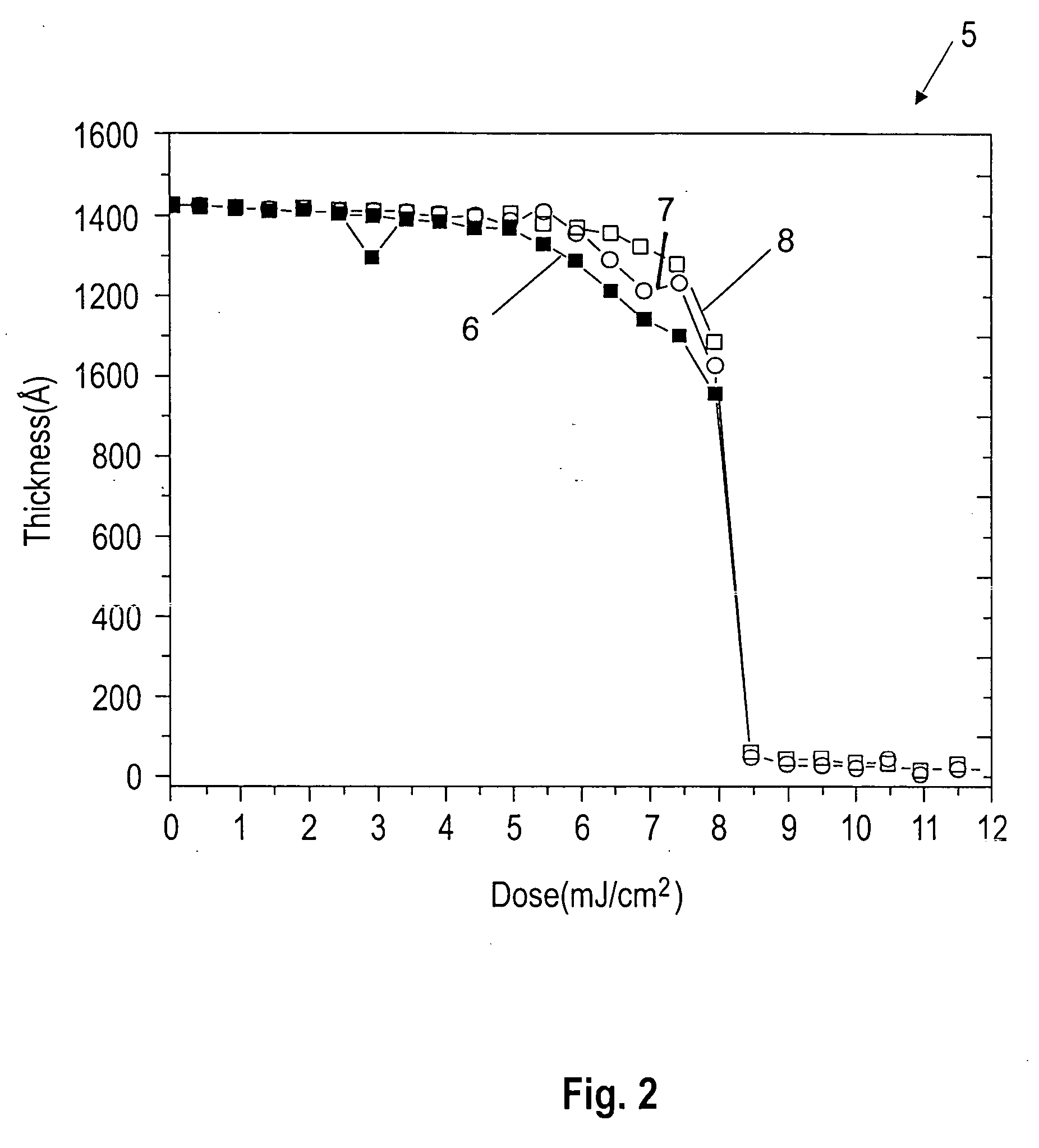Topcoat compositions and methods of use thereof
a composition and topcoat technology, applied in the field of photolithography, can solve the problems of water degrading the photoresist performan
- Summary
- Abstract
- Description
- Claims
- Application Information
AI Technical Summary
Problems solved by technology
Method used
Image
Examples
synthesis examples
[0023] The fluorine-containing polymer represented by formula (1) is commercially available from Daikin, Inc.
and was used as received. The polymer (4) was commercially available from Asahi Glass, Inc. and was used as received.
[0024] BHFACHTFMA (3,5-bis(hexafluoro-2-hydroxy-2-propyl)cyclohexyl 2-trifluoromethylacrylate) was obtained from Central Glass, Inc. and was used as received. BHFACHVE (3,5-bis(hexafluoro-2-hydroxy-2-propyl)cyclohexyl vinyl ether) was obtained from Central Glass, Inc. and was used as received.
[0025] VENBHFA(5-[(1′,1′,1′-trifluoro-2′-trifluoromethyl-2′-hydroxy)propyl]norboman-2-yl vinyl ether) was synthesized prior to its use per the following procedure. To a 3-necked 500-mL round-bottomed flask equipped with a condenser (nitrogen inlet), a digital thermometer, and a magnetic stir bar was added 173.2 g (0.63 mol) of NBHFA and 100 g (1.9 mol) of formic acid (88%). The mixture was heated at 100° C. under nitrogen overnight. The resulting yellow solution was ...
example 1
Synthesis of the Polymer (2)
[0029] The polymer (2) was prepared from the polymerization of 3,5-bis(hexafluoro-2-hydroxy-2-propyl)cyclohexyl 2-trifluoromethylacrylate (BHFACHTFMA) with VENBHFA per the following procedure.
BHFACHTFMA (2.7744 g) and VENBHFA (1.6003 g) were dissolved in 2.0565 g of ethyl acetate, to which was added 0.0658 g of 2,2′-azobis-(isobutyronitrile) AIBN. The solution was deaerated by bubbling N2 for 30 mm and then heated at 60° C. for 24 hrs.
[0030] After cooling to room temperature, the mixture was diluted with acetone and poured into hexane with stirring. The solvent was decanted and the remaining solid was dissolved in acetone. The polymer was reprecipitated in hexane. After decanting the solvent, the solid polymer was dried at room temperature under vacuum overnight. The product was the polymer (2) having a composition of acrylate / vinyl ether with n=0.61 and m=0.39. The weight-average molecular weight was 9,090 g / mol.
example 2
Synthesis of the Polymer (3)
[0031] The polymer (3) was prepared from the polymerization of BHFACHTFMA with BHFACHVE per the following procedure.
[0032] BHFACHTFMA (5.5519 g) and 0.1315 g of AIBN were added to 9.3694 g of 50% solution of BHFACHVE in EtOAc. After deaeration by bubbling N2 for 30 min, the mixture was heated at 60° C. for 24 hrs. The mixture was cooled to room temperature and diluted with acetone. The polymer was precipitated in hexane and the solvent decanted. The solid polymer was dissolved in acetone and reprecipitated in hexane. The precipitated polymer was filtered, washed with hexane, and dried at 50° C. in a vacuum oven overnight. The product was the polymer (3) having a composition of acrylate / vinyl with n=0.57 and m=0.43. The weight-average molecular weight was 66,200 g / mol.
Experimental
[0033] The polymers (1), (2), (3), and (4) typically have a weight-average molecular weight in a range from about 3,000 g / mol to about 100,000 g / mol as used in an embodiment ...
PUM
| Property | Measurement | Unit |
|---|---|---|
| weight % | aaaaa | aaaaa |
| thickness | aaaaa | aaaaa |
| temperature | aaaaa | aaaaa |
Abstract
Description
Claims
Application Information
 Login to View More
Login to View More - R&D
- Intellectual Property
- Life Sciences
- Materials
- Tech Scout
- Unparalleled Data Quality
- Higher Quality Content
- 60% Fewer Hallucinations
Browse by: Latest US Patents, China's latest patents, Technical Efficacy Thesaurus, Application Domain, Technology Topic, Popular Technical Reports.
© 2025 PatSnap. All rights reserved.Legal|Privacy policy|Modern Slavery Act Transparency Statement|Sitemap|About US| Contact US: help@patsnap.com



